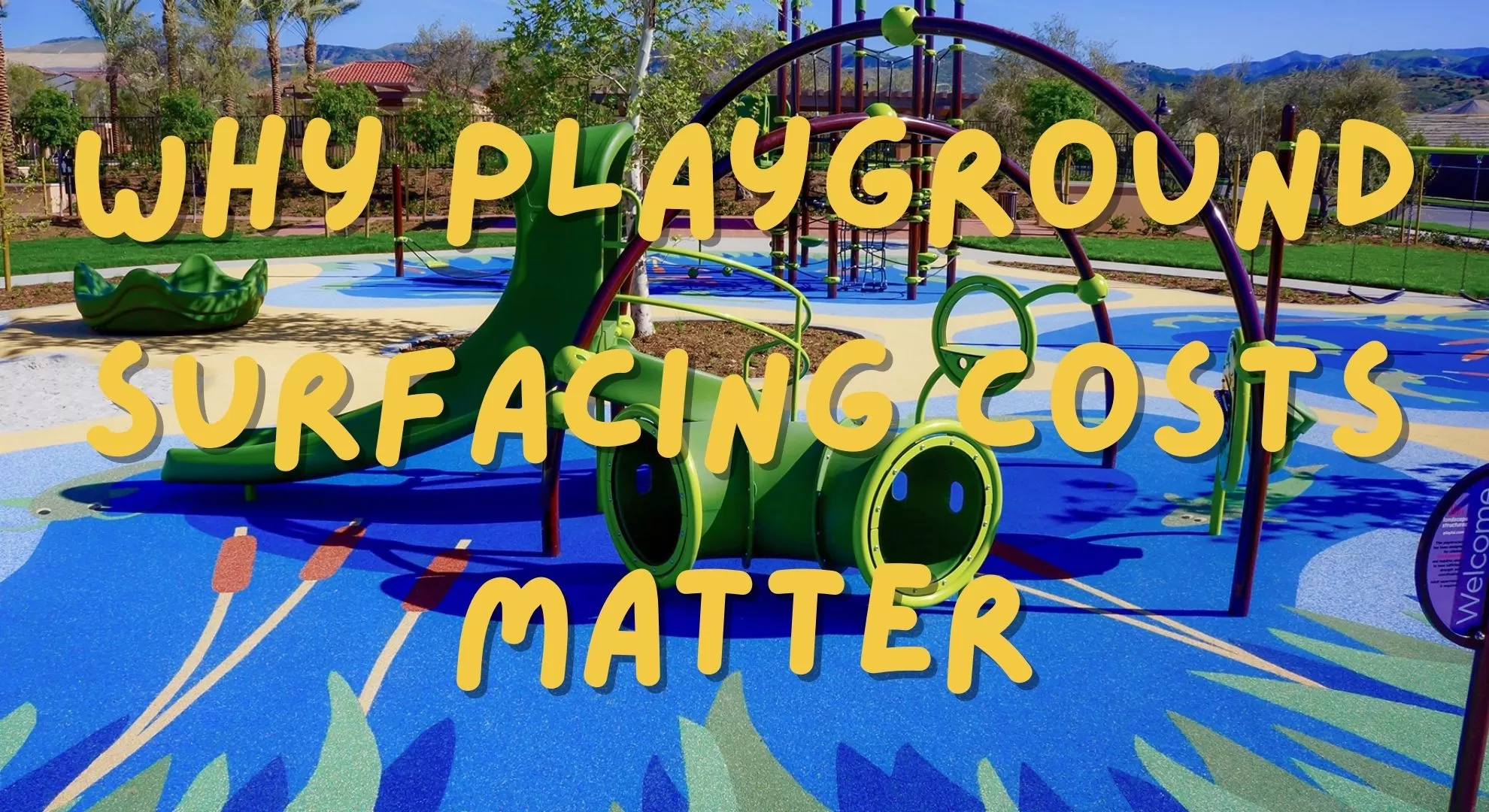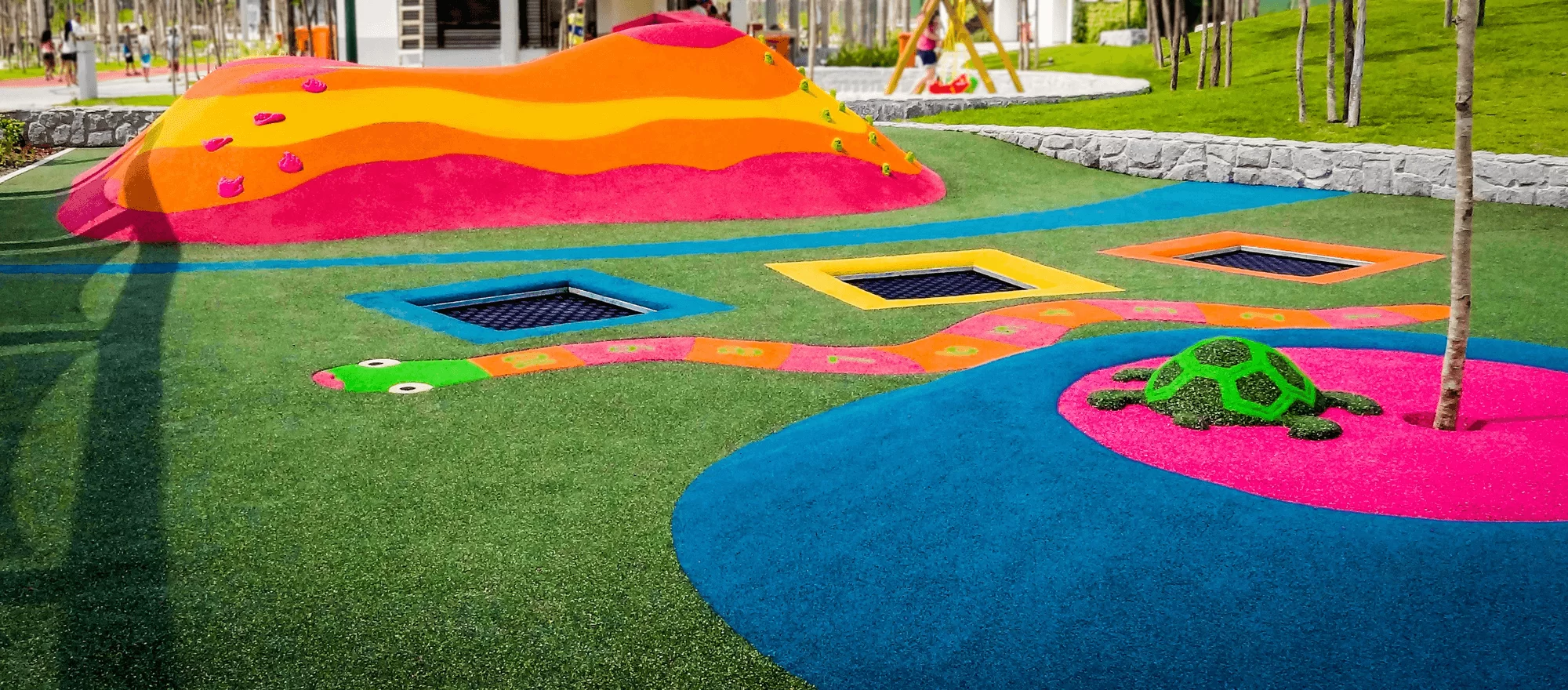Playground surfacing isn’t just about aesthetics, it’s a critical safety investment. Over 200,000 children are injured annually in playground accidents, many due to inadequate surfacing. Choosing the right material balances safety standards like ASTM F1292 with budget realities. Whether you’re building a school playground or a community park, understanding costs upfront ensures long-term value and compliance.

| Surface Type | Cost per Sq Ft (Materials) | Installation Cost | Lifespan | Maintenance Needs | Safety Rating (ASTM) |
|---|---|---|---|---|---|
| Poured Rubber | 8–15 | High | 10–15 yrs | Low | Excellent |
| Rubber Tiles | 5–12 | Moderate | 8–12 yrs | Moderate | Excellent |
| Engineered Wood Fiber | 3–7 | Low | 4–6 yrs | High | Good |
| Sand | 1–3 | Very Low | 2–4 yrs | Very High | Fair |
| Artificial Turf | 4–10 | Moderate | 6–10 yrs | Moderate | Good |
| Bonded Rubber | 6–14 | High | 10–12 yrs | Low | Excellent |
Note: Prices vary by region and project scale. Always request a customized quote.

Loose-fill options like sand or wood chips are budget-friendly upfront (7 per sq ft) but require frequent topping up. For example, a 1,000 sq ft sand surface may cost 500/year in maintenance. While these meet basic safety standards, they’re less ideal for high-traffic areas.
Poured-in-place rubber (PIP) and rubber tiles cost more upfront (15 per sq ft) but offer durability and ADA compliance. A school district in Texas saved 30% over 10 years by switching from wood chips to poured rubber, thanks to reduced maintenance. Learn more about rubber surfacing benefits.
Material Type: Rubber surfaces cost 3x more than sand but last 5x longer.
Installation Complexity: Poured rubber requires professional installation, adding 20–30% to total costs.
Safety Certifications: ASTM-compliant materials may cost 10–15% more but reduce liability risks.
Climate: Freeze-thaw cycles degrade loose fill faster, increasing replacement costs.
Accessibility: ADA-compliant unitary surfaces add 3/sq ft but are mandatory for public spaces.
Labor accounts for 25–40% of total costs. For example, installing poured rubber playground surfacing on a 500 sq ft area might cost 10/sq ft materials + $3/sq ft labor). Maintenance-wise, unitary surfaces save 50–70% over loose fill. The Consumer Product Safety Commission recommends annual inspections regardless of material.
Calculate Lifetime Costs: A 3/sq ft sand replaced every 3 years.
Prioritize Safety: Use playground surfacing cost calculator to compare impact attenuation values.
Check Local Grants: Many municipalities offer rebates for ADA-compliant surfaces.
Playground Surfacing Materials Types
Thank you very much for your inquiry! Your trust is our greatest motivation. We are committed to offering playgrounds that combine high quality with affordable pricing. Let us bring vitality to your venue!